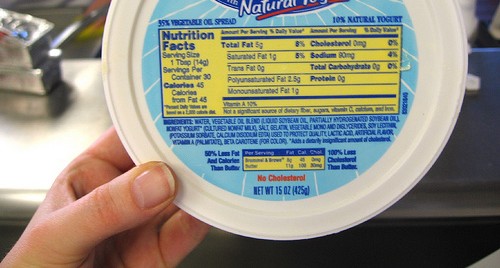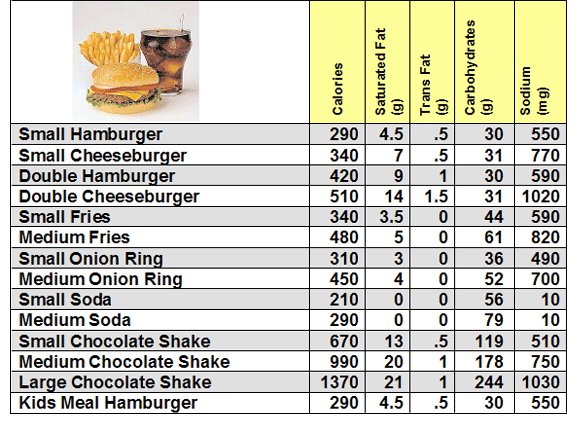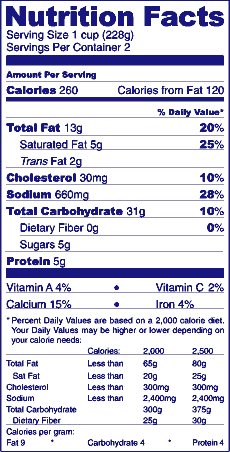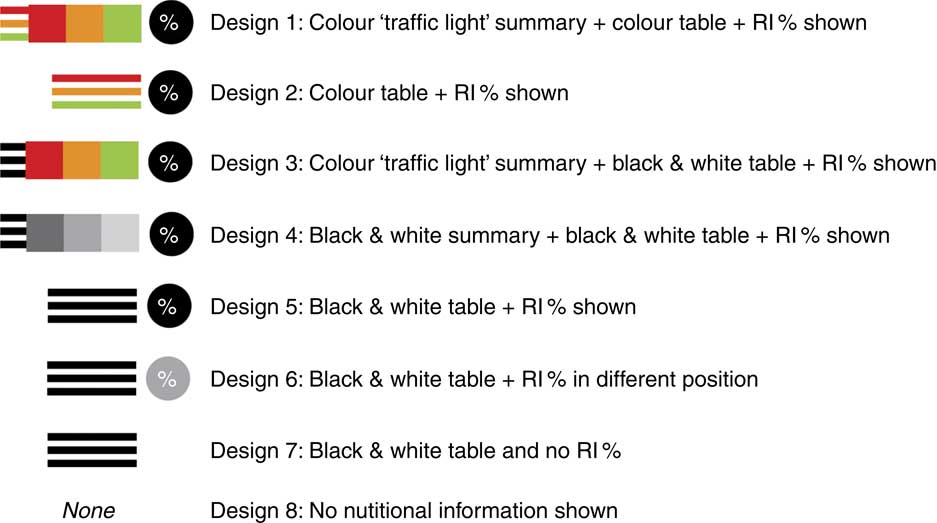41 nutritional value food labels
Interactive Nutrition Facts Label Nutrition Facts. 4 servings per container. Serving size 1 1/2 cup (208g) The % Daily Value (DV) tells you how much a nutrient in a serving of food contributes to a daily diet. 2,000 calories a day is used for general nutrition advice. How to Understand and Use the Nutrition Facts Label | FDA Dietary fiber, vitamin D, calcium, iron ad potassium are nutrients on the label that Americans generally do not get the recommended amount of. They are identified as nutrients to get more of....
Learn How the Nutrition Facts Label Can Help You Improve Your Health Nutrients Required on Label Vitamin D and potassium values are required. Calcium and iron will continue to be required. Vitamins A and C will no longer be required but can be included on a voluntary basis. Slight Decrease in Sodium Allowance The daily limit for sodium decreased slightly from 2,400 mg per day to 2,300 mg per day.
Nutritional value food labels
How to Determine the Nutritional Value of Food - FoodCrumbles 3) Calculate your nutritional value. If your product is made with your own recipe and has a unique composition, you will not be able to find literature values for it. However, you may find the nutritional value of the ingredients that you used. If so, you can use those to calculate the nutritional value of your product. Calories on the New Nutrition Facts Label | FDA One package of food may contain more than one serving, so, if you eat two servings you would be getting two times the calories shown on the label. For example, if you ate one serving of the food... How To Read Food and Beverage Labels | National Institute on Aging Although frozen and canned fruits and vegetables have food labels, fresh varieties often do not. You can find nutrition information for fresh vegetables and fruits on the USDA website. Or you can call the U.S. Department of Agriculture's Food and Nutrition Information Center at 301-504-5414. Understanding percent Daily Value (% DV)
Nutritional value food labels. How to Use the Nutrition Fact Label, Eat Right, NHLBI, NIH When using the Nutrition Facts label as a guide, try these tips: Keep these low: saturated fats, trans fats, cholesterol, and sodium. Get enough of these: potassium, fiber, vitamins A and C, calcium, and iron. Use the Percent Daily Value (% DV) column when possible; 5% DV or less is low, 20% DV or more is high. Visit the Smart Food Shopping ... The New Nutrition Facts Label | FDA The U.S. Food and Drug Administration (FDA) has updated the Nutrition Facts label on packaged foods and drinks. FDA is requiring changes to the Nutrition Facts label based on updated scientific... Food Labels (for Teens) - Nemours KidsHealth The information on food labels is based on an average adult diet of 2,000 calories per day. The actual number of calories and nutrients that kids need will depend on their age, weight, gender, and level of physical activity. (For more guidance, check out the USDA's MyPlate .) Fat Total fat shows how much fat is in a single serving of food. How to Read a Nutrition Facts Label | Everyday Health Lower sodium limit Food labels reflect the new, slightly lower RDA of 2,300 milligrams (mg) per day (down from 2,400 mg per day). How to Read a Nutrition Facts Label First, know that, as the label...
Understanding Nutrition Labels - Medical News The nutrition label helps the health-conscious consumer to make an informed decision about the nutritional value of the food item. This also helps the consumer to avoid certain ingredients if they ... Food Labels | CDC All the numbers on this label are for a 2/3-cup serving. This package has 8 servings. If you eat the whole thing, you are eating 8 times the amount of calories, carbs, fat, etc., shown on the label. Total Carbohydrate shows you types of carbs in the food, including sugar and fiber. Choose foods with more fiber, vitamins, and minerals. Food labels - NHS Nutrition labels are often displayed as a panel or grid on the back or side of packaging. This type of label includes information on energy (kJ/kcal), fat, saturates (saturated fat), carbohydrate, sugars, protein and salt. It may also provide additional information on certain nutrients, such as fibre. Free Nutrition Label Maker - Create and Download Nutrition Fact Labels Learn more about the changes to the nutrition fact label format . Step 1. Which version of our Nutrition Label Generator would you like to use? New (2016) Original Load a Previously Saved Label Step 2. Choose a Nutrition Label Format The most basic nutrition label. Vertical layout. Standard nutrition label with extra fields for misc. vitamins.
Daily Value on the New Nutrition and Supplement Facts Labels Use %DV to determine if a serving of the food is high or low in an individual nutrient. As a general guide: 5% DV or less of a nutrient per serving is considered low. 20% DV or more of a nutrient... The Basics of the Nutrition Facts Label Protein: A percentage Daily Value for protein is not required on the label. Eat moderate portions of lean meat, poultry, fish, eggs, low-fat milk, yogurt and cheese, plus beans and peas, nuts, seeds and soy products. Carbohydrates: There are three types of carbohydrates: sugars, starches and fiber. Food Labels: Fat & Cholesterol | Home & Garden Information Center The 2015 Dietary Guidelines for Americans recommends the following intakes of fat and cholesterol every day: total fat—20 to 35% of calories, depending on age and gender (65 grams for the 2,000-calorie intake level used in the Daily Value)*. saturated fat—less than 10% of calories**. trans fat— keep as low as possible. Understanding Nutrition Facts on Food Labels - WebMD After fats, carbohydrates, dietary fiber, sugars, and protein are listed on the food label. These items are followed by specific nutrients in the food, such as vitamin A, vitamin C, calcium, and...
Understanding Food Labels | The Nutrition Source | Harvard T.H. Chan ... The Nutrition Facts label is overseen by the U.S. Food and Drug Administration (FDA) and was first mandated under the Nutrition Labeling and Education Act of 1990 to help consumers make quick, informed food choices. It has undergone revisions, with the latest update released in 2016.
How Do They Calculate Calories on Food Labels? 5 grams of fat (5 x 9 = 45 calories) 22 grams of carbohydrate (22 x 4 = 88 calories) 2 grams of protein (2 x 4 = 8) ...should contain approximately 140 calories. It's important to recognize that 4-9-4 is an average, and not an exact amount.
Nutrition Facts Label - IFT.org The 1990 Nutrition Labeling and Education Act requires disclosure of nutrient composition information on almost all packaged food and beverage products sold to household consumers. The Nutrition Facts Label, also referred to as the Nutrition Facts Panel, on packaged food and beverage products is intended to help consumers make informed food ...
The Importance of Reading the Food Label and Nutritional Facts All labels provide key information about any given packaged food, such as serving size, number of calories, fat content, cholesterol, protein, sugar content, carbohydrates, etc. And of course, each label also provides a list of ingredients so you know exactly how any given food product is made.
PDF How Do I Understand the "Nutrition Facts" Label? your total calories. For a person who needs 2,000 calories a day, this is 120 calories or less, or about 13 grams of saturated fat. Most foods in the grocery store have a Nutrition Facts label and ingredient list. When you go grocery shopping, take time to read the Nutrition Facts labels on the foods you purchase. Compare the nutrients and
Food Labels | Nutrition.gov The U.S. Food and Drug Administration (FDA) has updated the Nutrition Facts label on packaged foods and beverages with a fresh design that will make it easier for you to make informed food choices that contribute to lifelong healthy eating habits. What's in a Name? What Every Consumer Should Know About Foods and Flavors
Food Labeling & Nutrition | FDA Food labeling is required for most prepared foods, such as breads, cereals, canned and frozen foods, snacks, desserts, drinks, etc. Nutrition labeling for raw produce (fruits and vegetables) and ...
Nutrition Facts and Food Labels Get to know the basics of the Nutrition Facts label, and understand the parts and pieces, from serving size, total calories and fat to percent of Daily Values. Teach Your Teen about Food Panels If decoding the information on a food package is a challenge for adults, think of how hard it is for teens who are just beginning to make choices for ...
Understanding Food Nutrition Labels | American Heart Association Make sure you get enough of the nutrients your body needs, such as: calcium, choline, dietary fiber, iron, magnesium, potassium, and vitamins A, C, D and E.* 5 - Understand % Daily Value. The % Daily Value (DV) tells you the percentage of each nutrient in a single serving, in terms of the daily recommended amount.
How To Read Food Nutrition Labels: Learn The Nutritional Content And Calories Of What You're ...
Making the Most of the Nutrition Facts Label Infographic Eat foods with nutrients your body needs like calcium, dietary fiber, iron, potassium, and Vitamin D. % Daily Value. The % Daily Value (DV) tells you the percentage of each nutrient in a single serving in terms of the daily recommended amount. To consume less of a nutrient (such as saturated fat or sodium), choose foods with a lower % DV (5% or ...
How To Read Food and Beverage Labels | National Institute on Aging Although frozen and canned fruits and vegetables have food labels, fresh varieties often do not. You can find nutrition information for fresh vegetables and fruits on the USDA website. Or you can call the U.S. Department of Agriculture's Food and Nutrition Information Center at 301-504-5414. Understanding percent Daily Value (% DV)
Calories on the New Nutrition Facts Label | FDA One package of food may contain more than one serving, so, if you eat two servings you would be getting two times the calories shown on the label. For example, if you ate one serving of the food...
How to Determine the Nutritional Value of Food - FoodCrumbles 3) Calculate your nutritional value. If your product is made with your own recipe and has a unique composition, you will not be able to find literature values for it. However, you may find the nutritional value of the ingredients that you used. If so, you can use those to calculate the nutritional value of your product.





:brightness(10):contrast(5):no_upscale()/nutrition-label-172872825-596940b35f9b582c356dd02a.jpg)




Post a Comment for "41 nutritional value food labels"